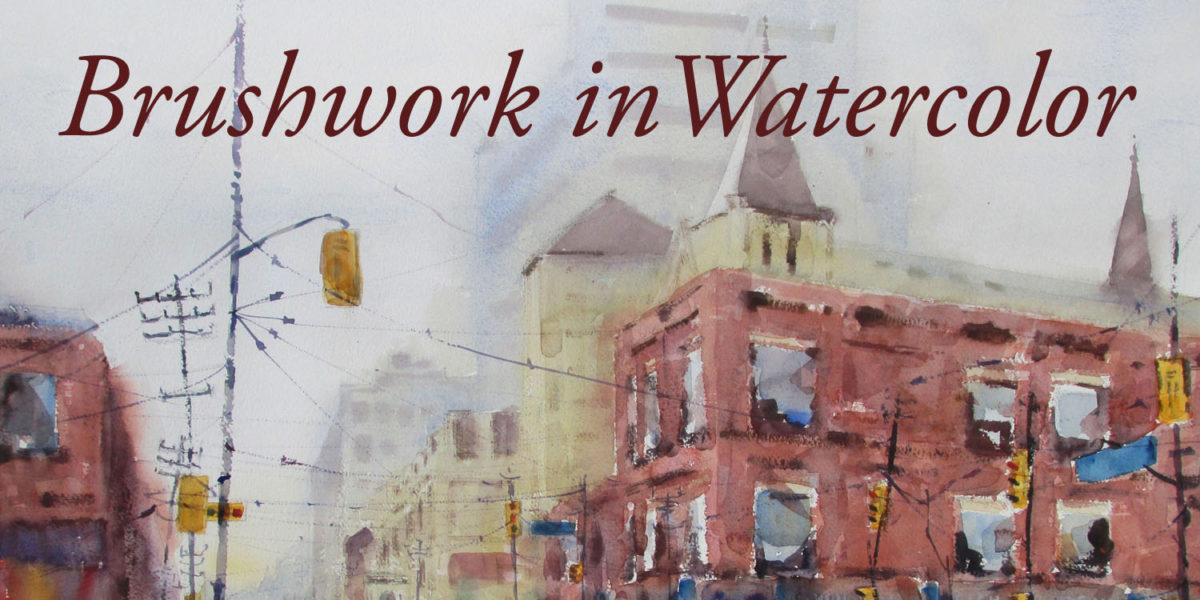So what is Brushwork after all and why it should be such a big deal while painting in watercolor?
Brushwork can be defined as the process of applying paint on canvas/paper using a brush.What contributes the final outcome of brushwork in a painting (in context of watercolor technique) are amount and consistency of paint in the brush, the shape and size of the brush, wetness and surface texture of the paper, angle of the brush to the paper while applying paint, motion or movement of the brush, pressure of the brush on the paper, speed of the brush on paper, how the brush is held etc. In watercolor painting brushwork may seem not to be that important. That is because most of the painting in watercolor can be done by wash and wet in wet techniques. And many times we just let watercolor do its own things on paper where brush is not involved. So we can do away with brushwork in a watercolor painting and still produce great looking works.But is it really so?
Even in wash and wet in wet watercolour techniques size and shape of the brush, angle and pressure of the brush, motion and speed of the brush play an important role. If you really think of it anything that you do with a brush on paper is actually brushwork. Brushwork is the major technique that contributes to the ‘style’ of a watercolor artist. Moreover unlike other surfaces watercolor paper is responsive to how the brush touches it. You go a little hard and the surface can get damaged. But at times a painting demands aggressive brushwork. Hence brushwork is as important (if not more) to watercolor painting as it is to any other medium.
Examples of Brushwork Watercolor Technique
Below are some examples of brush work in my paintings. These are only a few examples. The possibilities of brushwork are actually limitless and you have to experiment with different ways to really understand the range of brushwork that you can produce.
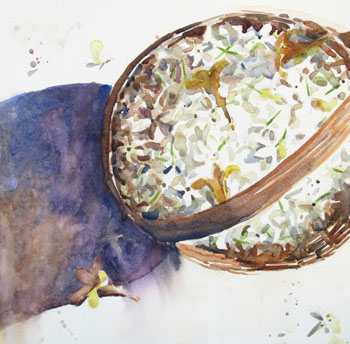
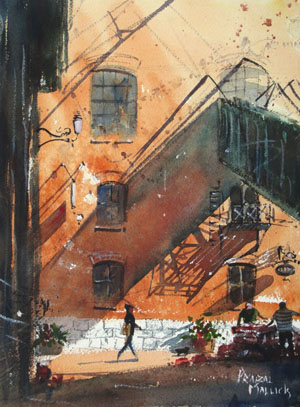
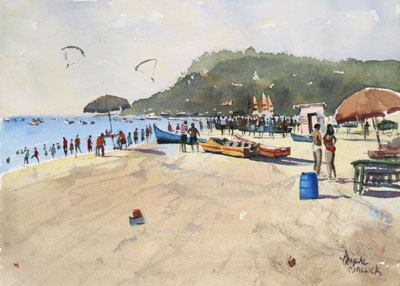
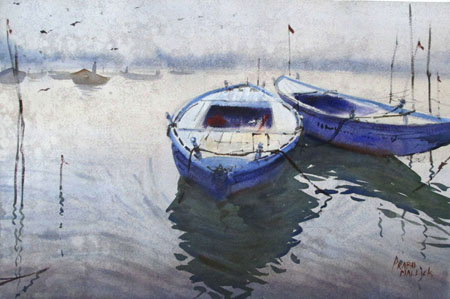
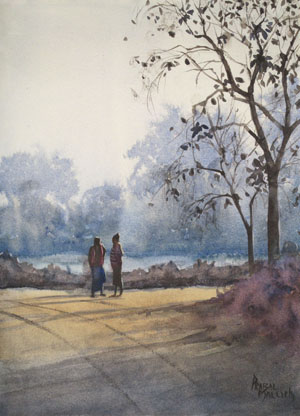
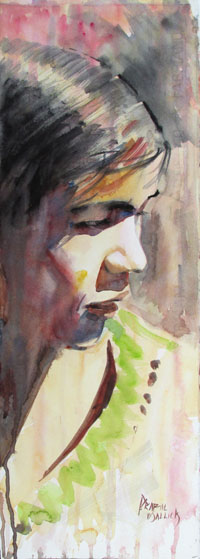
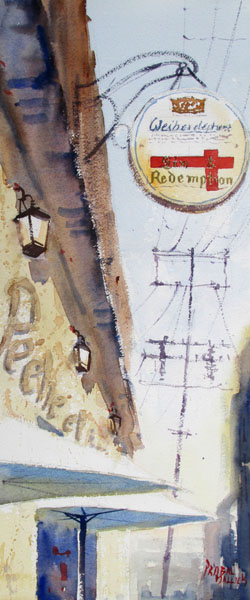

Practicing Brushwork
Brushwork is all about practice. The idea is to get used to a brush and build muscle memory of using it in different ways. Hence a lot of deliberate practice is needed along with the practice you get from doing a painting. There are many type of brush control practice available on internet. You can pick up few of them and practice. The brush exercises by John Lovett is simple to understand and great for practicing.
The last thing I would like to touch upon is what is known as ‘Economy of brush strokes’. There is an optimum amount of brushwork that works for a painting. Anything beyond that makes the painting too heavy. It is always good to stay below the optimum amount of brushwork than to overdo it. Hence keeping amount of brush strokes to minimum in every stage of the painting is very crucial in retaining the freshness of the painting. And this fact can never be stressed enough.

